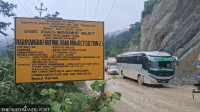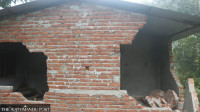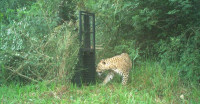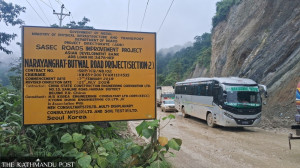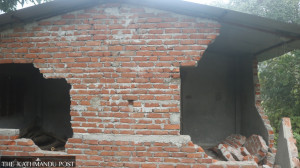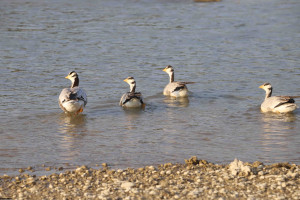Lumbini Province
Siddhababa tunnel work progressing, but outer road still dangerous
Deadly landslides on the Siddhababa road section claim lives every year, but tunnel work and modern safety measures aim to cut accidents.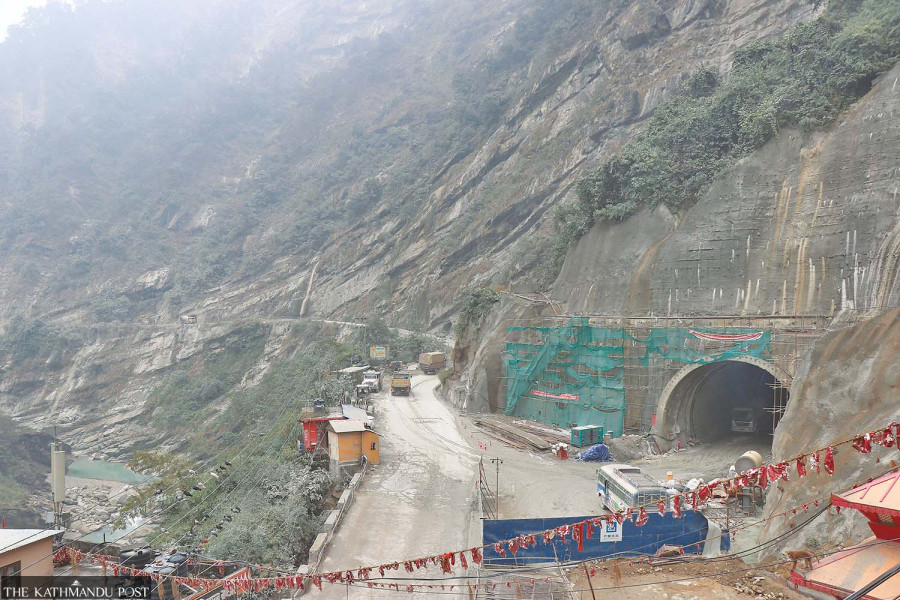
Madhav Aryal
Despite the Siddhababa tunnel project work progressing rapidly, deadly landslides along the Palpa-Butwal road section have remained a serious concern. The recent death of 36-year-old Janak Bhandari, a motorcyclist from Tilpur in ward 6 of Ramapur Municipality, in a landslide near Dobhan, has reignited fears. His wife was injured in the incident.
Whether it is monsoon season or dry winter, many people perish in landslides in the Siddhababa section of the Siddhartha Highway every year. According to the data at the District Traffic Police Office in Palpa, as many as 68 people have died and 57 others were injured in the Siddhababa section due to landslides, rockfalls and accidents over the past decade.
A 1,126-metre long tunnel is under construction in the most perilous stretch of the road section. The tunnel aims to mitigate such tragedies, but locals remain sceptical about the safety on the outer road even after the tunnel opens. “The tunnel might help, but the outer road is still dangerous,” said Keshav Bahadur Saru of ward 3 of Tinau Rural Municipality, who frequently travels the stretch with fear. The most hazardous four-kilometer stretch from Dobhan to the Siddhababa Temple area is notorious for year-round landslides that bury vehicles and sweep passengers into the Tinau River.
Krishna Raj Adhikari, chief of Siddhababa Tunnel Project, said the project includes slope stabilisation and rock barriers to reduce risks on the outer road. High-tensile steel mesh will be installed to catch rocks weighing up to 5,000 kilograms.
So far, 1,495 meters of slope stabilisation has been completed on the southern side and 495 meters on the northern side. However, work on key segments like MR1 (Main Road 1) and MR2 (Main Road 2) mountain slopes still lag far behind schedule.
The China State Construction Engineering Corporation was awarded the project tender worth Rs7.34 billion on February 17, 2022. According to the contract terms, construction must be completed by March 22, 2027. The tunnel excavation work began in December last year. According to officials, as of mid-July, physical progress stands at 57.51 percent, and financial progress at 51.01 percent.
Inside the main tunnel, 1,089 meters of invert—the tunnel floor lining ensuring water drainage—has been completed. The inner structural lining is progressing well, with 918.8 metres finished. Work on bypass tunnels for ventilation and emergency exits are also progressing rapidly.
The main tunnel located in ward 3 of Tinau Rural Municipality of Palpa district, achieved the breakthrough in January this year.
Risk mitigation efforts will extend beyond the tunnel. After the monsoon, work on slope stabilisation and rockfall barriers installation will be carried out on the roads from Chidiakhola to Siddhababa Temple and from the northern tunnel exit to Dobhan. The road will be widened into dedicated two lanes with modern safety technology to reduce landslide risks.
Adhikari said tunnel work has been prioritised, given the challenging geography outside. Once vehicles are allowed through the tunnel, external slope stabilisation work will follow swiftly. Currently, 124 meters of lining work has been completed in Bypass 1, while 125 meters of invert work has been completed in Bypass 3.
The tunnel, with a width of 10.5 metres and a height of 7 metres, features modern engineering. The lining prevents water leakage, ensures durability, and enhances safety. After the monsoon, work on the hazardous outer slopes will resume with wire meshing and rock netting methods, according to officials.
The Siddhababa-Dobhan road section is the main link between more than a dozen districts in the plains and hills of Lumbini and Gandaki provinces. More than 10,000 vehicles ply this road section on a daily basis.
Upon completion of the Siddhababa tunnel, residents of Palpa, Rupandehi, Gulmi, Arghakhanchi, Syangja, Kaski, Baglung and Mustang will experience safer, uninterrupted travel on what is considered one of Nepal’s most accident-prone highways.




 16.57°C Kathmandu
16.57°C Kathmandu
